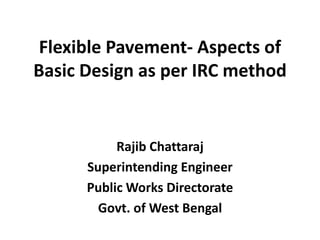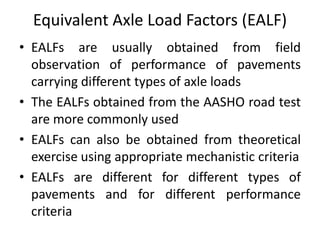This document discusses the design of flexible pavements according to the IRC method. It covers types of pavements, pavement composition, factors considered in pavement design such as subgrade strength, traffic loading, and climatic conditions. It describes methods to characterize traffic loading, including defining a standard axle load, conducting axle load surveys to determine vehicle damage factors, and distributing traffic loads across lanes. Design life and traffic volumes are estimated using growth formulas. The evolution of the IRC flexible pavement design code is summarized, from the initial empirical method to current mechanistic-empirical approaches.



























































































